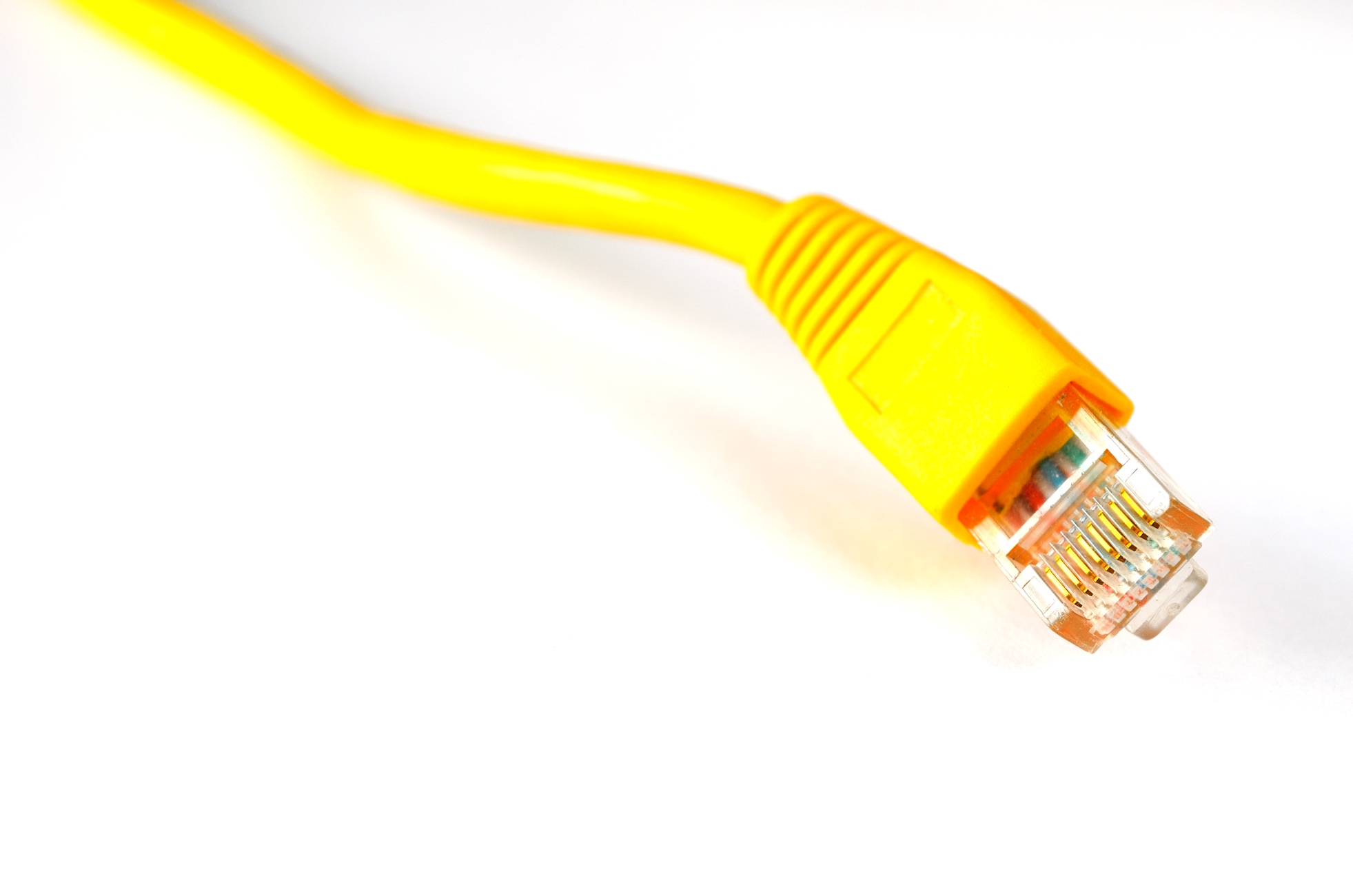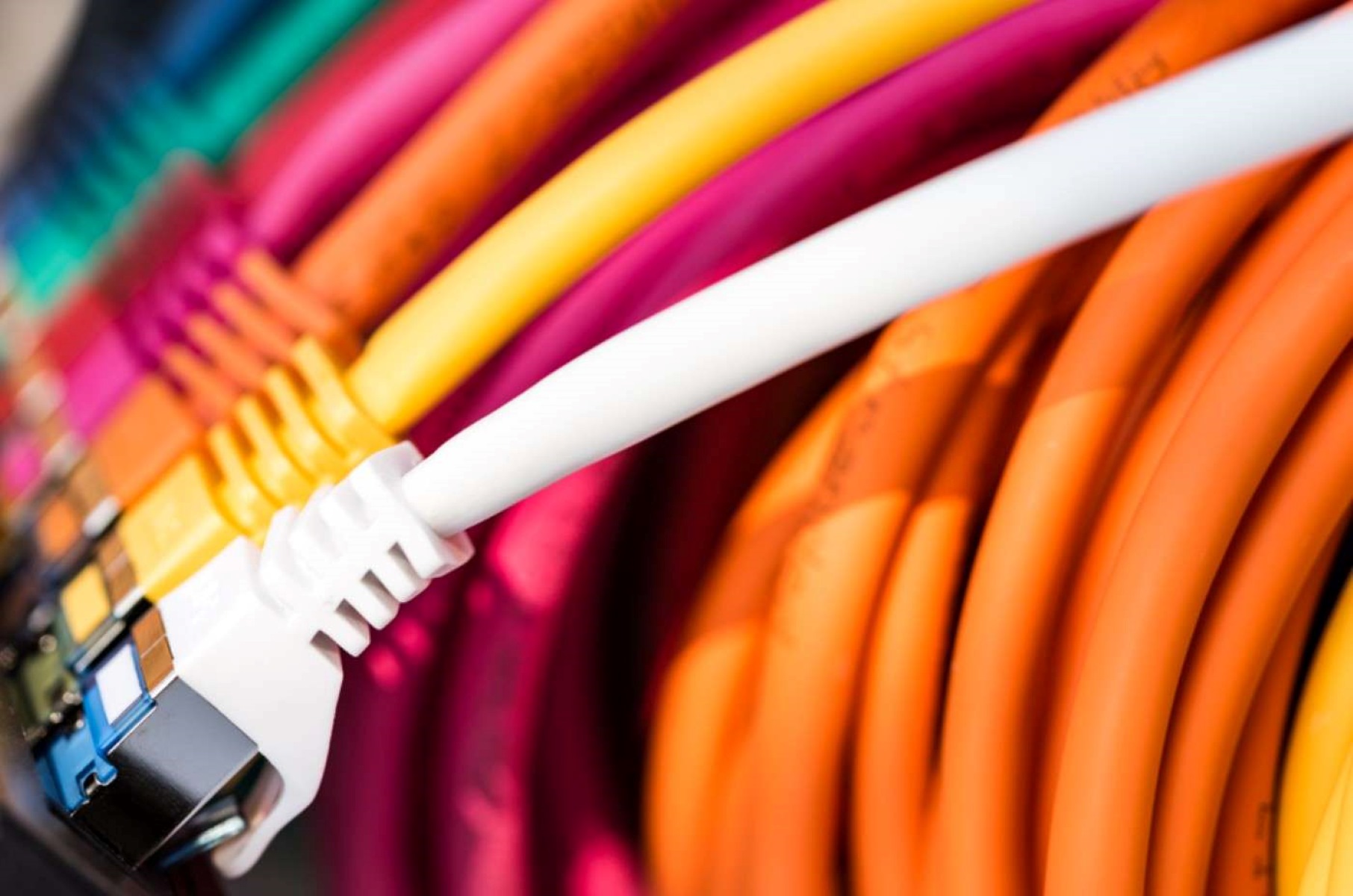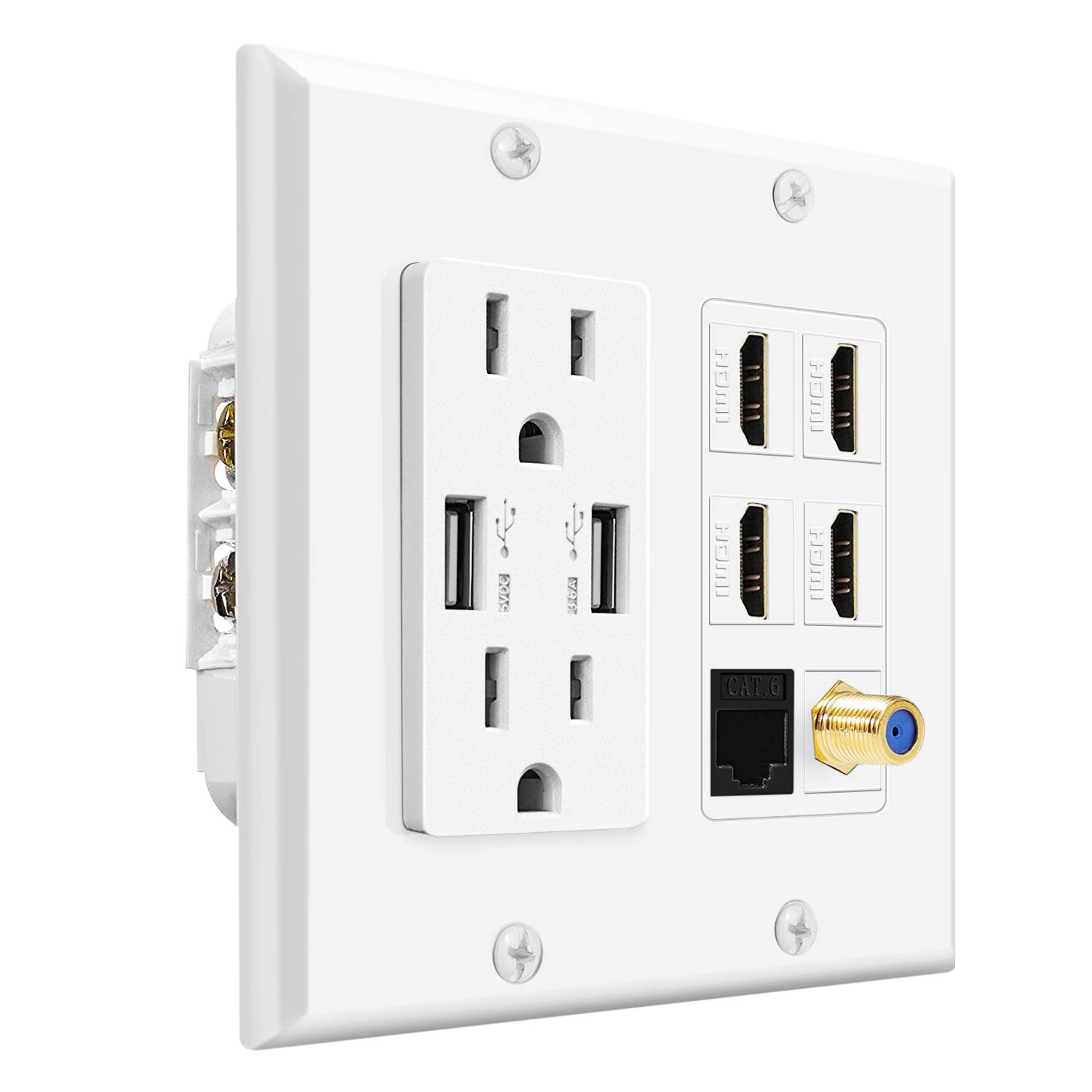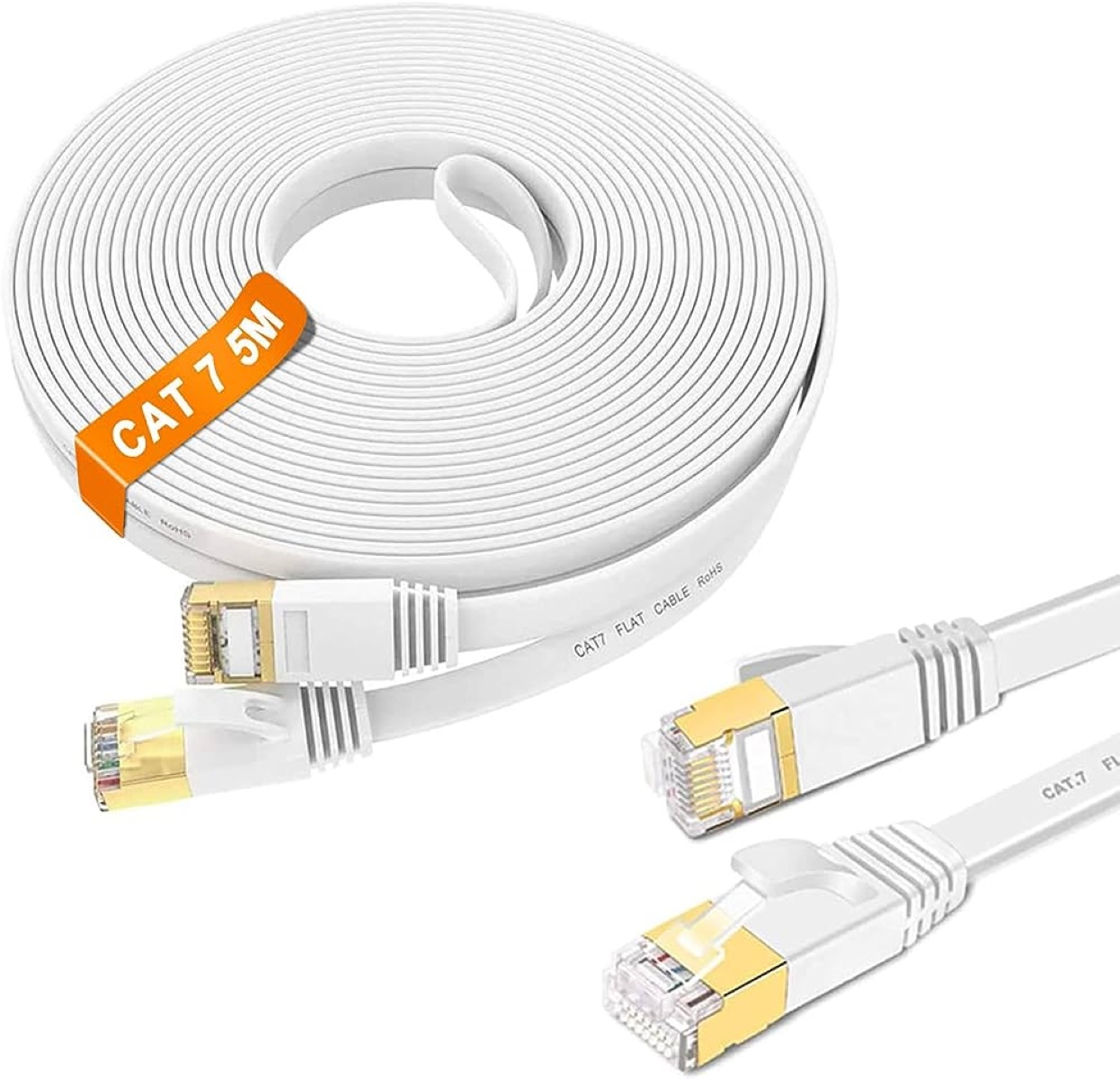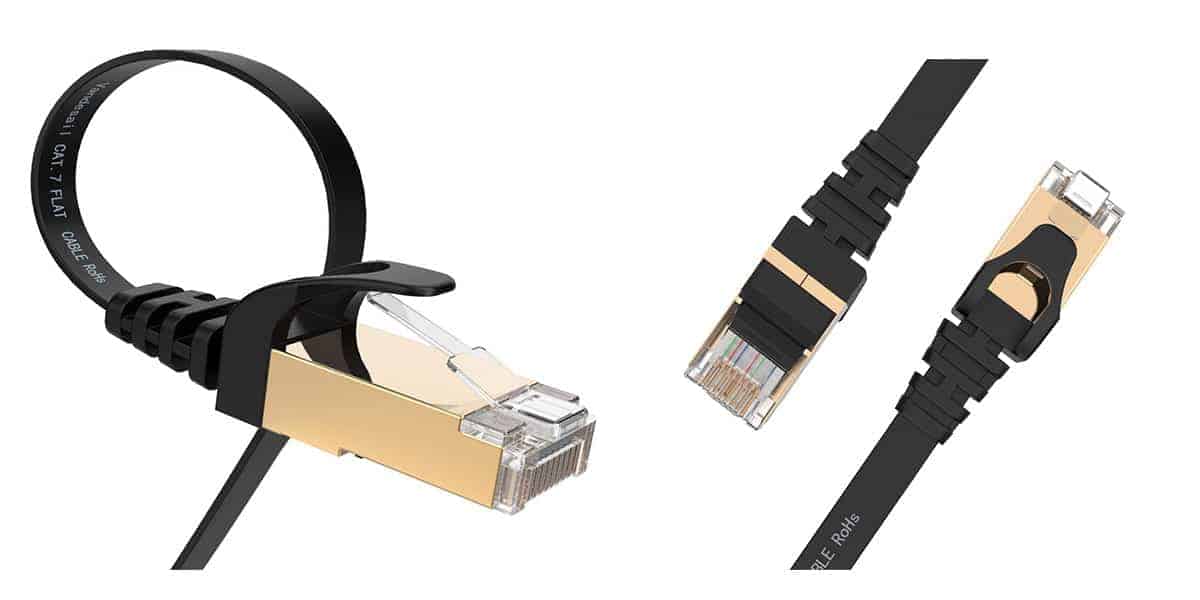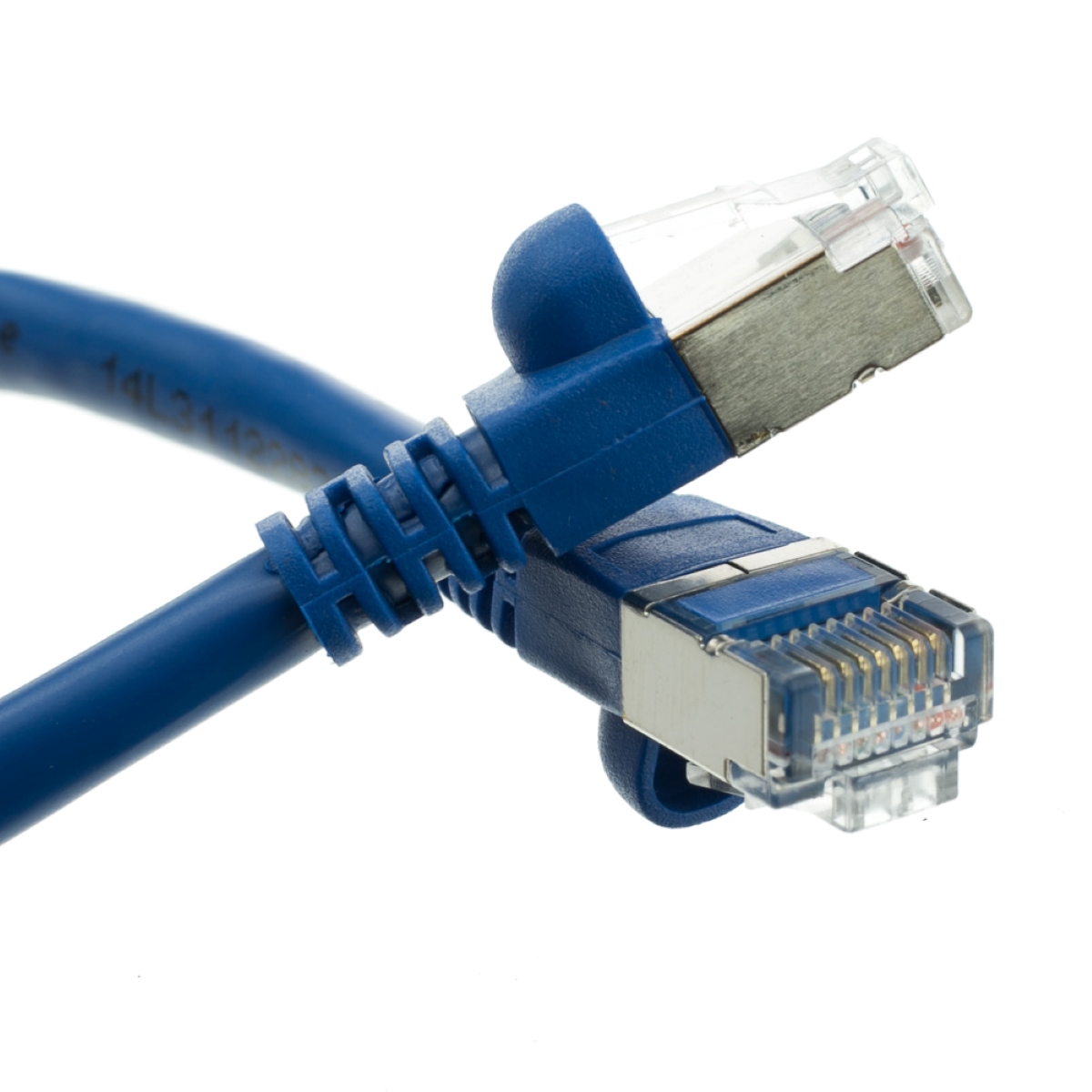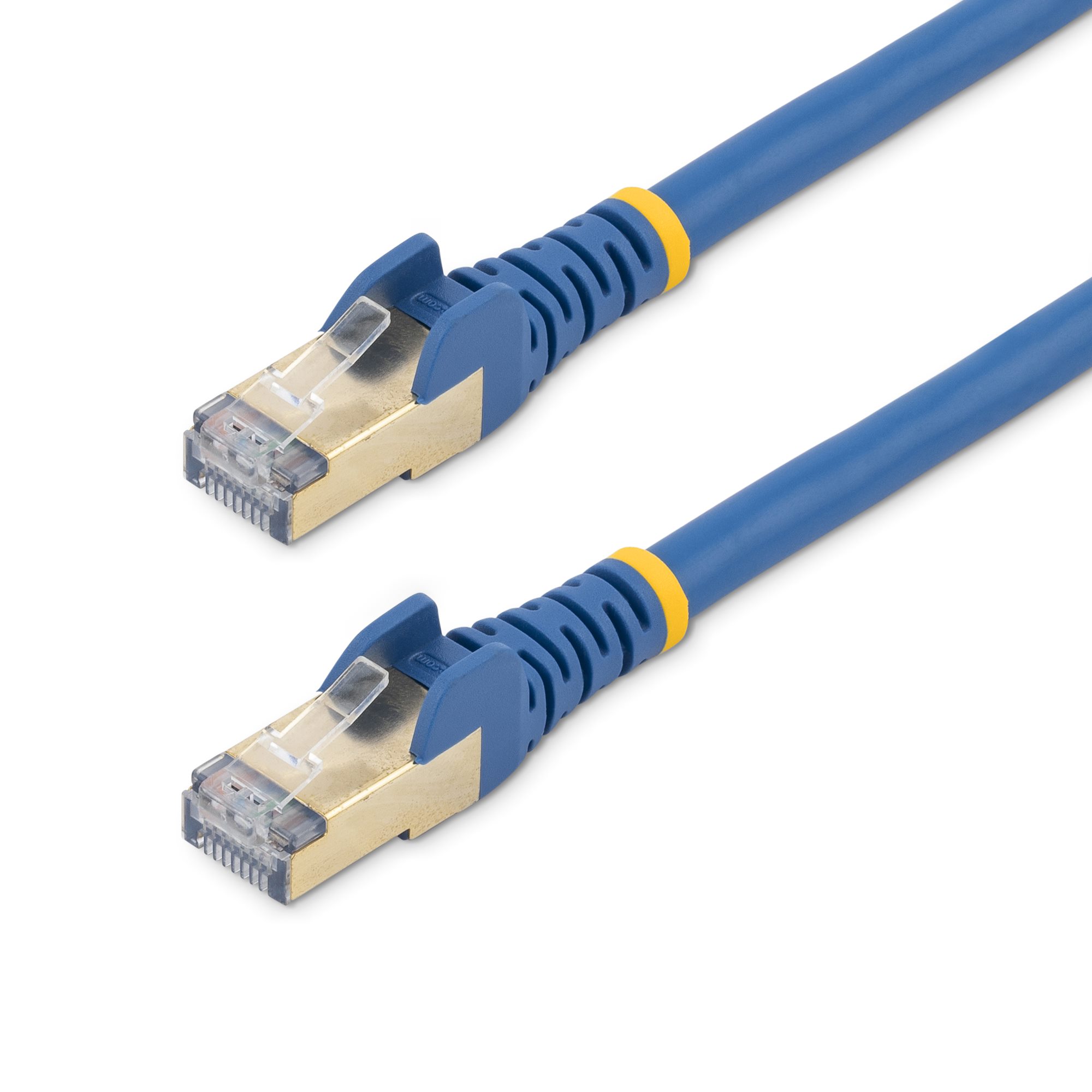Introduction
Ethernet cables are an essential component of networking infrastructure, allowing devices to connect and communicate with each other. Whether you’re setting up a home network or a large-scale business network, understanding the different types of Ethernet cables is crucial to ensure optimal performance and reliability.
Ethernet cables, also commonly referred to as network cables or LAN cables, are used to establish wired connections between devices such as computers, routers, switches, and other network equipment. They transmit data signals over twisted pairs of copper wires, providing a fast and reliable means of transferring information. Ethernet cables have become the standard for wired internet connections and are used in various settings, including homes, offices, schools, and data centers.
In this article, we will explore the different types of Ethernet cables, including Category 5, Category 5e, Category 6, Category 6a, and Category 7. We will discuss their key characteristics, performance capabilities, and suitability for various applications. Additionally, we will touch on the concept of shielded versus unshielded Ethernet cables and their impact on network performance.
Understanding Ethernet cables is essential for making informed decisions when it comes to setting up a network or upgrading your existing infrastructure. By choosing the right type of cable for your needs, you can ensure reliable data transmission, minimize signal degradation, and optimize network performance. So, let’s dive in and explore the world of Ethernet cables to help you make the best choice for your networking requirements.
What is an Ethernet Cable?
An Ethernet cable is a type of network cable used to connect devices within a local area network (LAN). It serves as the physical medium through which data is transmitted between devices such as computers, printers, routers, and switches. Ethernet cables carry digital signals using a system called Ethernet, which is a widely adopted standard for wired networking.
Ethernet cables use twisted pairs of copper wires to transmit data signals. These twisted pairs help reduce interference from external sources, ensuring reliable and high-speed data transmission. The cables consist of four pairs of wires, each with a different color coding scheme to facilitate proper connection and data transfer.
Ethernet cables come in various categories, including Category 5 (Cat5), Category 5e (Cat5e), Category 6 (Cat6), Category 6a (Cat6a), and Category 7 (Cat7). Each category represents a different standard and provides varying levels of performance and capabilities.
The primary function of an Ethernet cable is to establish a wired connection between devices, enabling them to communicate and share data. When a device sends a data packet, the Ethernet cable carries the electrical signals from one end to the other, ensuring that the information reaches its intended destination accurately and efficiently.
Ethernet cables offer several advantages over wireless connections. They provide a more stable and consistent connection, with lower latency and higher data transfer speeds. Additionally, Ethernet cables are less susceptible to signal interference and offer better security compared to wireless networks, making them ideal for situations where reliability and privacy are crucial.
Ethernet cables have evolved over the years to support higher bandwidths and faster data transmission rates. The capabilities of the cable you choose will depend on your specific networking requirements, the devices you are connecting, and the maximum speeds your network infrastructure can handle.
In the next sections, we will delve into the different types of Ethernet cables and their specific characteristics to help you make an informed decision when selecting the right cable for your networking needs.
Different Types of Ethernet Cables
Ethernet cables come in various categories, each designed to meet specific performance standards and support different data transmission speeds. Understanding the different types of Ethernet cables and their capabilities is crucial for choosing the right cable for your network. Let’s explore the most common categories of Ethernet cables:
- Category 5 (Cat5) Ethernet Cable: Cat5 cables were one of the earliest Ethernet cable standards and can support speeds of up to 100 Mbps. They are suitable for basic networking needs and are often used in home networks and small businesses.
- Category 5e (Cat5e) Ethernet Cable: Cat5e cables are an improved version of Cat5 cables, offering better performance and higher data transfer speeds. They are capable of supporting speeds up to 1,000 Mbps (1 Gbps) and are commonly used in both residential and commercial applications.
- Category 6 (Cat6) Ethernet Cable: Cat6 cables are designed to support higher bandwidths and faster transmission speeds compared to Cat5e cables. They can handle data rates up to 10 Gbps over short distances, making them suitable for demanding applications like video streaming and large data transfers.
- Category 6a (Cat6a) Ethernet Cable: Cat6a cables are an enhanced version of Cat6 cables and offer even higher performance. They can support data rates of up to 10 Gbps over longer distances. Cat6a cables are commonly used in professional settings such as data centers and enterprise networks.
- Category 7 (Cat7) Ethernet Cable: Cat7 cables are the latest and most advanced type of Ethernet cables. They are designed to support speeds up to 10 Gbps and provide superior shielding against electromagnetic interference. Cat7 cables are ideal for high-performance networks that require maximum reliability and speed.
It’s important to note that the performance of your Ethernet network will depend not only on the type of cable but also on the network equipment you use, such as routers, switches, and network cards. To achieve the maximum performance, it’s recommended to use the same category of cables throughout your network infrastructure.
When choosing an Ethernet cable, consider your specific needs and the speed requirements of your devices. While Cat5e cables are generally sufficient for most home and small office networks, Cat6 or Cat6a cables may be more suitable for demanding applications or future-proofing your network.
In the next sections, we will explore the features and benefits of each Ethernet cable category in more detail, helping you make an informed decision on the most suitable cable for your networking needs.
Category 5 Ethernet Cable
Category 5 (Cat5) Ethernet cables were the standard for wired networking in the late 1990s and early 2000s. While they have been surpassed by newer cable categories, Cat5 cables are still widely used today for basic networking needs. They are an affordable and reliable solution for home networks, small businesses, and environments where high-speed data transmission is not a top priority.
Cat5 cables consist of four pairs of twisted copper wires and can support data transmission speeds of up to 100 Mbps (megabits per second) or 1000Base-T Ethernet. They are typically terminated with an RJ-45 connector, which is compatible with most network devices. Cat5 cables are backward compatible with earlier cable standards, such as Cat3 and Cat4, making them a versatile option for various networking setups.
One important consideration with Cat5 cables is their maximum cable length. While they can support speeds of up to 100 Mbps, the performance may degrade over longer distances. The standard maximum length for a Cat5 cable is 100 meters (328 feet). Beyond this length, signal degradation and data loss may occur. If you need to cover longer distances, you may need to consider alternative cable categories that offer better performance over longer runs.
Cat5 cables are suitable for basic internet browsing, email, and file sharing in home networks or small offices. They can also be used for connecting devices like printers, game consoles, and security cameras to a network. However, if you require higher data transfer speeds for activities such as streaming large media files or online gaming, you may want to consider upgrading to a higher category cable, such as Cat5e or above.
Overall, Cat5 cables provide a cost-effective solution for establishing a reliable wired network connection. While they may not offer the same performance as newer cable categories, they can still meet the needs of many home and small office networks. If you are on a tight budget or do not require high-speed data transfer, Cat5 cables can be a practical choice.
In the following sections, we will discuss the features, advantages, and considerations of other Ethernet cable categories, allowing you to choose the most suitable cable for your specific networking requirements.
Category 5e Ethernet Cable
Category 5e (Cat5e) Ethernet cables are an improved version of the Cat5 cables, offering enhanced performance and higher data transfer speeds. Cat5e cables have become the standard choice for Ethernet installations in both residential and commercial settings. They provide a cost-effective solution for achieving faster and more reliable wired network connections.
Cat5e cables share many similarities with Cat5 cables in terms of design and construction. They consist of four pairs of twisted copper wires and use the same RJ-45 connectors. However, Cat5e cables are designed to reduce crosstalk and electromagnetic interference, which can lead to signal degradation and data loss. The “e” in Cat5e stands for “enhanced,” highlighting the improved capabilities of these cables compared to Cat5.
One of the notable advantages of Cat5e cables is their ability to support data transmission speeds of up to 1000 Mbps (or 1 Gbps). This makes them suitable for most networking needs, including high-bandwidth applications like video streaming, online gaming, and file transfers. Cat5e cables are also backward compatible with older cable standards, allowing them to work with devices that require slower network speeds.
In terms of maximum cable length, Cat5e cables have the same limit as Cat5 cables, which is 100 meters (328 feet). Beyond this distance, signal degradation may occur, impacting data transmission reliability. It’s important to ensure proper cable installation and avoid excessive bends or sharp corners to maintain optimal performance.
Cat5e cables are commonly used in a wide range of network setups, from home networks and small offices to larger commercial environments. They offer a balance between cost-effectiveness and performance, making them a popular choice for many Ethernet installations. If you require higher data transfer speeds or plan for future network expansion, you may consider upgrading to a higher category cable such as Cat6 or Cat6a.
In summary, Cat5e Ethernet cables provide improved performance and higher data transfer speeds compared to Cat5 cables. They are a reliable and affordable solution for achieving fast and stable wired network connections. Cat5e cables are suitable for most everyday networking needs and can handle applications that require high bandwidth. However, if you have specific requirements for even faster speeds or greater network performance, it may be worth considering more advanced cable categories.
In the subsequent sections, we will explore the features, benefits, and considerations of other Ethernet cable categories, helping you make an informed decision on the most suitable cable for your specific networking needs.
Category 6 Ethernet Cable
Category 6 (Cat6) Ethernet cables are a significant advancement over the previous Cat5e standard, offering even higher performance and data transfer speeds. Cat6 cables are designed to provide superior performance for modern networking needs, making them a popular choice for residential, commercial, and enterprise applications.
Cat6 cables feature improved insulation and tighter twists in the wires, resulting in reduced crosstalk and better overall signal quality. They are capable of supporting data transmission speeds of up to 10 gigabits per second (10 Gbps) over short distances. This makes Cat6 cables ideal for demanding applications such as video conferencing, HD video streaming, online gaming, and large file transfers.
One crucial distinction between Cat6 and previous cable categories is the stringent specifications for interference and crosstalk. Cat6 cables are specifically designed to minimize signal degradation and maintain high network performance, even in environments with high levels of electrical noise or interference.
The maximum cable length for reliable data transmission over Cat6 cables is typically 55 meters (180 feet) for 10 Gbps speeds. For lower data rates, such as 1 Gbps or 100 Mbps, Cat6 cables can reach the maximum length of 100 meters (328 feet) prescribed by Ethernet standards. It’s vital to properly terminate and install Cat6 cables to minimize signal loss and ensure optimal performance.
Cat6 cables are backward compatible with previous Ethernet standards, allowing them to be used in networks where lower-speed devices are present. However, to achieve the full performance potential of Cat6 cables, it is advisable to use them with compatible network equipment, such as Cat6-rated routers, switches, and network cards.
In terms of physical appearance, Cat6 cables often have thicker and heavier gauge wires compared to Cat5e cables. This increased thickness is due to the tighter twisting of the wire pairs and the additional insulation present in Cat6 cables. It’s essential to consider cable management and any space constraints when planning for the installation of Cat6 cables.
Cat6 Ethernet cables have gained significant popularity due to their ability to handle demanding applications and future-proof network installations. Whether you are setting up a home theater system, a small office network, or a large-scale enterprise infrastructure, Cat6 cables can provide the high-speed performance and reliability required for efficient data transfer.
In the subsequent sections, we will explore other Ethernet cable categories like Cat6a and Cat7, which offer even higher performance and capabilities for more advanced networking needs. Understanding the features and differences between these cable categories will help you make an informed decision on the most suitable cable for your network requirements.
Category 6a Ethernet Cable
Category 6a (Cat6a) Ethernet cables are an enhanced version of the Cat6 cables, offering even higher performance and improved data transmission speeds. Cat6a cables are designed to meet the growing demands of modern networks by providing superior performance and bandwidth capabilities, making them ideal for high-speed applications and environments where reliable data transmission is critical.
One of the key advancements of Cat6a cables is their ability to support data transfer speeds of up to 10 gigabits per second (10 Gbps) over the full 100-meter (328 feet) maximum cable length. This makes Cat6a cables ideal for situations that require high bandwidth and consistent performance, such as data centers, enterprise networks, and applications involving extensive video streaming or large data transfers.
Cat6a cables employ even tighter twists in the wire pairs and enhanced insulation compared to Cat6 cables. These design improvements result in significantly reduced crosstalk and higher signal integrity, ensuring reliable and high-quality data transmission. The improved shielding properties of Cat6a cables also make them highly resistant to electromagnetic interference, maintaining signal integrity even in electrically noisy environments.
It’s important to note that due to their thicker and heavier gauge wires and larger physical size, Cat6a cables may be less flexible and bendable compared to lower category cables. Proper cable management and consideration of space constraints are crucial when planning the installation of Cat6a cables.
Cat6a cables are backward compatible with previous Ethernet standards, allowing them to work with devices that require slower network speeds. However, to fully utilize the capabilities of Cat6a, it’s advisable to use compatible Cat6a-rated network equipment, including routers, switches, and network cards.
The superior performance and reliability of Cat6a cables make them the go-to choice for critical applications that demand maximum speed, minimal latency, and secure data transfer. Their ability to handle high-speed data transmission over longer distances makes them suitable for a wide range of professional settings, including data centers, server rooms, and high-bandwidth networks.
When considering Cat6a cables, it’s essential to evaluate your network requirements and the specific demands of your applications. The additional performance and capabilities of Cat6a cables come at a higher cost compared to lower category cables. Therefore, it’s crucial to determine whether the benefits of Cat6a justify the investment for your networking needs.
In the subsequent sections, we will explore further Ethernet cable categories such as Cat7, which offer even more advanced features and performance, enabling you to make an informed decision on the most suitable cable for your specific networking requirements.
Category 7 Ethernet Cable
Category 7 (Cat7) Ethernet cables are one of the most advanced and highest-performing cable options available. Designed to meet the needs of the most demanding networks, Cat7 cables offer superior performance, high-speed data transmission, and exceptional shielding capabilities.
Cat7 cables are built with four individually shielded twisted pairs of copper wires, providing maximum protection against crosstalk and electromagnetic interference. The shielding is typically made of a foil or a combination of foil and braided shielding, resulting in higher signal integrity and reduced signal loss compared to lower category cables.
The primary advantage of Cat7 cables is their ability to support data transmission speeds of up to 10 gigabits per second (10 Gbps) over the full 100-meter (328 feet) maximum cable length. This makes them ideal for applications that demand high bandwidth, such as server rooms, data centers, and professional audio and video setups.
Cat7 cables are often equipped with a modified version of the RJ-45 connector called the GG-45 or TERA connector. These connectors are backward compatible with the standard RJ-45 connectors, allowing Cat7 cables to be used with existing network equipment. However, to achieve the full performance potential of Cat7 cables, it’s recommended to use them with compatible Cat7-rated components.
Another notable feature of Cat7 cables is their ability to support the transmission of power over Ethernet (PoE). This allows devices like cameras, access points, and VoIP phones to be powered directly through the Ethernet cable, eliminating the need for separate power cables.
Due to their advanced features and exceptional performance, Cat7 cables are commonly used in environments where the highest levels of speed, reliability, and security are required. They support a wide range of applications, including video surveillance, high-performance computing, large-scale data transfers, and other bandwidth-intensive tasks.
It’s important to note that Cat7 cables are less flexible and bulkier compared to lower category cables due to their additional shielding and larger wire gauge. This can make them more challenging to install in tight spaces or when routing cables through walls or conduits. Proper cable management and planning are essential to ensure proper installation and optimal performance.
When considering Cat7 cables, it’s crucial to assess your specific networking requirements and the level of performance needed. While Cat7 cables offer exceptional performance, they are also more expensive compared to lower category cables. Therefore, it’s essential to determine whether the benefits of Cat7 justify the investment for your particular networking needs.
In the subsequent sections, we will explore other aspects of Ethernet cables, such as shielded versus unshielded variations, to provide you with a comprehensive understanding and help you make the best choice for your networking infrastructure.
Shielded vs. Unshielded Ethernet Cables
When it comes to Ethernet cables, you may come across two main variants: shielded and unshielded cables. Both options are designed to provide reliable data transmission, but they differ in terms of their construction and the level of protection they offer against electromagnetic interference (EMI). Understanding the differences between shielded and unshielded Ethernet cables can help you choose the right option for your specific networking needs.
Unshielded Ethernet Cables (UTP): Unshielded Ethernet cables, also known as unshielded twisted pair (UTP) cables, are the most common type of Ethernet cable. They consist of twisted pairs of copper wires, with no additional shielding around them. UTP cables are designed to provide reliable data transmission in most everyday networking scenarios. They are cost-effective, flexible, and easy to install, making them a popular choice for home networks, small offices, and environments where EMI is not a significant concern.
While UTP cables do not provide an additional physical shielding layer, they rely on the inherent twisting of the wire pairs to reduce the impact of external electromagnetic interference. For many networking applications, this level of protection is sufficient. However, in environments with high levels of EMI, such as industrial settings or areas with many electronic devices in close proximity, shielded cables may be necessary to ensure optimal performance.
Shielded Ethernet Cables (STP, FTP, and S/FTP): Shielded Ethernet cables, on the other hand, offer an additional layer of protection against EMI. There are several types of shielded cables, including shielded twisted pair (STP), foil twisted pair (FTP), and screened/foiled twisted pair (S/FTP) cables.
STP cables have an overall shielding layer surrounding all the twisted pairs, while FTP cables have individual pairs shielded with foil and no overall shielding. S/FTP cables have both individual pairs shielded with foil and an overall shielding layer. These shielded cables are designed to provide better protection against EMI, making them suitable for environments where EMI is prevalent, such as data centers, hospitals, and industrial facilities.
Shielded Ethernet cables not only protect against external EMI but also reduce crosstalk between the wire pairs, improving overall signal quality and data transmission reliability. This makes them ideal for high-performance networks, where maintaining signal integrity and minimizing interference are vital.
It’s worth noting that shielded Ethernet cables are often thicker and less flexible than their unshielded counterparts. This can make them less suitable for tight spaces or installations that require extreme bending or maneuverability.
When deciding whether to use shielded or unshielded Ethernet cables, it’s essential to consider the specific environment and the potential EMI challenges you may encounter. If you expect a high level of electromagnetic interference or you require the utmost data transmission reliability and performance, shielded Ethernet cables may be the appropriate choice. However, for most everyday networking needs, unshielded UTP cables will suffice.
In the following sections, we will discuss cable management and installation considerations to help you make informed decisions when setting up your Ethernet network, regardless of the cable type you choose.
Conclusion
Ethernet cables are the backbone of wired networking, providing reliable and fast data transmission between devices. Understanding the different types of Ethernet cables is crucial for setting up efficient and high-performance networks that meet your specific needs.
In this article, we explored the various categories of Ethernet cables, including Cat5, Cat5e, Cat6, Cat6a, and Cat7. Each category offers different performance capabilities, data transmission speeds, and suitability for different networking requirements.
Cat5 cables are the basic and most affordable option, while Cat5e cables provide enhanced performance and support higher data transfer speeds. Cat6 cables offer even higher speeds and better performance, while Cat6a cables take it a step further with improved shielding and distance capabilities. Cat7 cables are the most advanced, providing unparalleled speed and shielding against electromagnetic interference.
Additionally, we discussed the difference between shielded and unshielded Ethernet cables. Unshielded cables (UTP) are the most common choice for everyday networking needs, while shielded cables (STP, FTP, and S/FTP) offer increased protection against electromagnetic interference and are well-suited for environments with high EMI levels.
When choosing the right Ethernet cable for your network, consider factors such as your required data transfer speeds, network environment, and budget. It’s important to strike a balance between performance and cost-effectiveness to ensure optimal network performance and reliability.
Regardless of the cable category you choose, proper cable management and installation techniques are essential for maintaining signal integrity and maximizing performance. Avoid tight bends, sharp corners, and excessive cable lengths to minimize signal loss and ensure consistent data transmission throughout your network.
By understanding the features, advantages, and considerations of different Ethernet cable categories, you can make informed decisions when setting up or upgrading your network infrastructure. Whether it’s for your home, small business, or large enterprise, selecting the right Ethernet cable is critical for building a robust and efficient wired network.
With the knowledge gained from this article, you are well-equipped to make informed choices when selecting Ethernet cables that best suit your networking needs. Take into account your specific requirements, budget, and future scalability to ensure that your network performs optimally, enabling seamless communication and data transfer.







